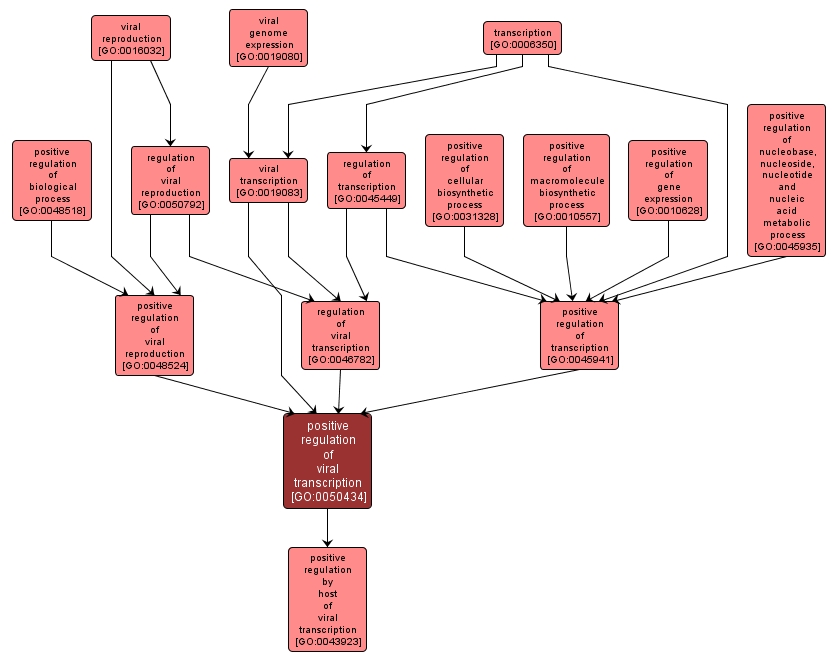GO TERM SUMMARY
|
| Name: |
positive regulation of viral transcription |
| Acc: |
GO:0050434 |
| Aspect: |
Biological Process |
| Desc: |
Any process that activates or increases the frequency, rate or extent of viral transcription. |
Synonyms:
- activation of viral transcription
- up-regulation of viral transcription
- upregulation of viral transcription
- stimulation of viral transcription
- up regulation of viral transcription
|
|

|
INTERACTIVE GO GRAPH
|














